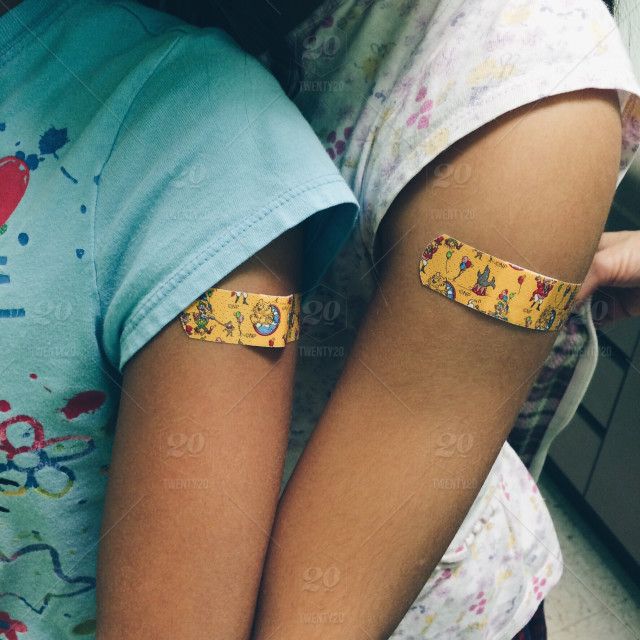Creating Your Disaster Plan
After a disaster occurs is too late to think about developing a Preparedness Plan. You need to be ready before an emergency or a disaster occurs. Make sure you and your family are prepared before any disaster or emergency.Remember, you need to include in your plan how to contact your family members, have needed medications available, emergency numbers, and don’t forget to keep your pets in mind when you prepare your plan.
Preparedness is the key to survival. Don’t forget to include your community in your need to develop a plan. A disaster doesn’t wait for your family to be together before it strikes. You maybe in different parts of your community when an emergency happens, so be sure your schools, places of worship, and other families become familiar with the need to create a plan. The following link will provide you with information on how to stay informed, make a plan, build a kit, and get involved in preparedness in your community. Visit bereadynebraska.com for more information.
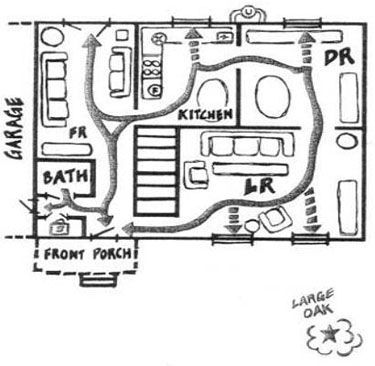
Find out what could happen in your area.
Find out what your community’s warning signals are, what they sound like and what you should do when you hear them.
Learn about disaster plans at work, school, daycare and other places where your family spends time.
If you have animals, find out about animal care. They may not be allowed in some places during and after a disaster.
Find out how to help the elderly and disabled
Create a Disaster Plan For Your Family
Meet with your family and discuss what types of disasters could happen in your area and what to do.
Discuss the steps of evacuation
Choose 2 places to meet family members
- Outside your house if members are home.
- Outside your neighborhood in case you can’t get to your home (city park, church, school, etc.)
Ask an out-of-state family member or friend to be your family’s “Contact Person”. After a disaster, communication can be difficult. Many times it is easier to get through to your contact person out of state than to make a local call.
Practice and Maintain Your Plan
Conduct fire and emergency evacuation drills
Quiz your family every six months so they don’t forget
Test and recharge fire extinguishers
Check/rotate food and water in your evacuation kit every 6 months.
Test smoke detectors monthly. Change batteries every 6 months.
Remember to always remain calm. Panic causes accidents.
Before Any Emergency Know How to Shut Off the Utilities: (Locate the following)
Electric Fuse Box, is usually in the house. The Electrical Meter is usually outside.
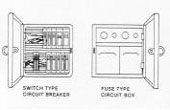
Gas Main Valve (Outside where the gas line enters the house).
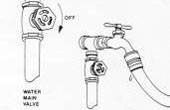
Water Main (usually 2 places – one inside the house and the other outside where the city can read it.)
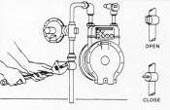
Teach family members how to safely shut off utilities.
Attach a wrench to the gas meter so that you will not need to look for one during an emergency.
Have the proper tool attached near the water main to turn it off.
Prepare some Necessities For Quick Action
Your Evacuation kit should contain the necessary items to sustain life for the first critical hours/days following a disaster. When assembling a kit remember to make it, portable so that a woman or child could carry it. It should be easy to use.
Include the following:
Food:
Instant Cereal
Instant Hot Chocolate
Food Bar
Shelter/Bedding:
Tube Tent
Rain Poncho
Space Blanket
Wool Blanket
Sleeping Bags
Water:
Water Purification
1 Gallon of water per person per day
Sanitation:
Toilet Paper
Soap/Shampoo
Personal Hygiene Items
Heat/Light:
Pocket Hand Warmers
Matches/Candles
Propane Stove
Fire Starter Kit
Flashlight
Gloves
Misc Items:
Extra set of car keys
Credit cards/Cash
List of family physicians
Special items for infants, elderly or disabled members
Dry extra clothing
Fire Extinguisher
Communications:
Battery Powered Radio
Extra Batteries
First Aid Kit
When Assembling your First Aid Kit, take into consideration the following:
- Specific health needs of family members
- Include the necessary medications and equipment for them.
- Basic Medical Supplies
Pet Disaster Plan:
Make sure that your pets are current on their vaccinations. Pet shelters require proof of vaccines.
- Have a current photograph of your pet.
- Keep a collar with identification on your pet and have a leash on hand to control your pet.
- Have a properly-sized pet carrier for each animal. Carriers should be large enough for the animal to stand and turn around.
Specialized pet shelters, animal control shelters, veterinary
clinics and friends and relatives out of harm’s way are all potential
refuge for your pet during and after a disaster.Plan for ample supply
of food, water food bowls, any necessary medications, specific care
instructions and news- papers or trash bags for clean-up.



